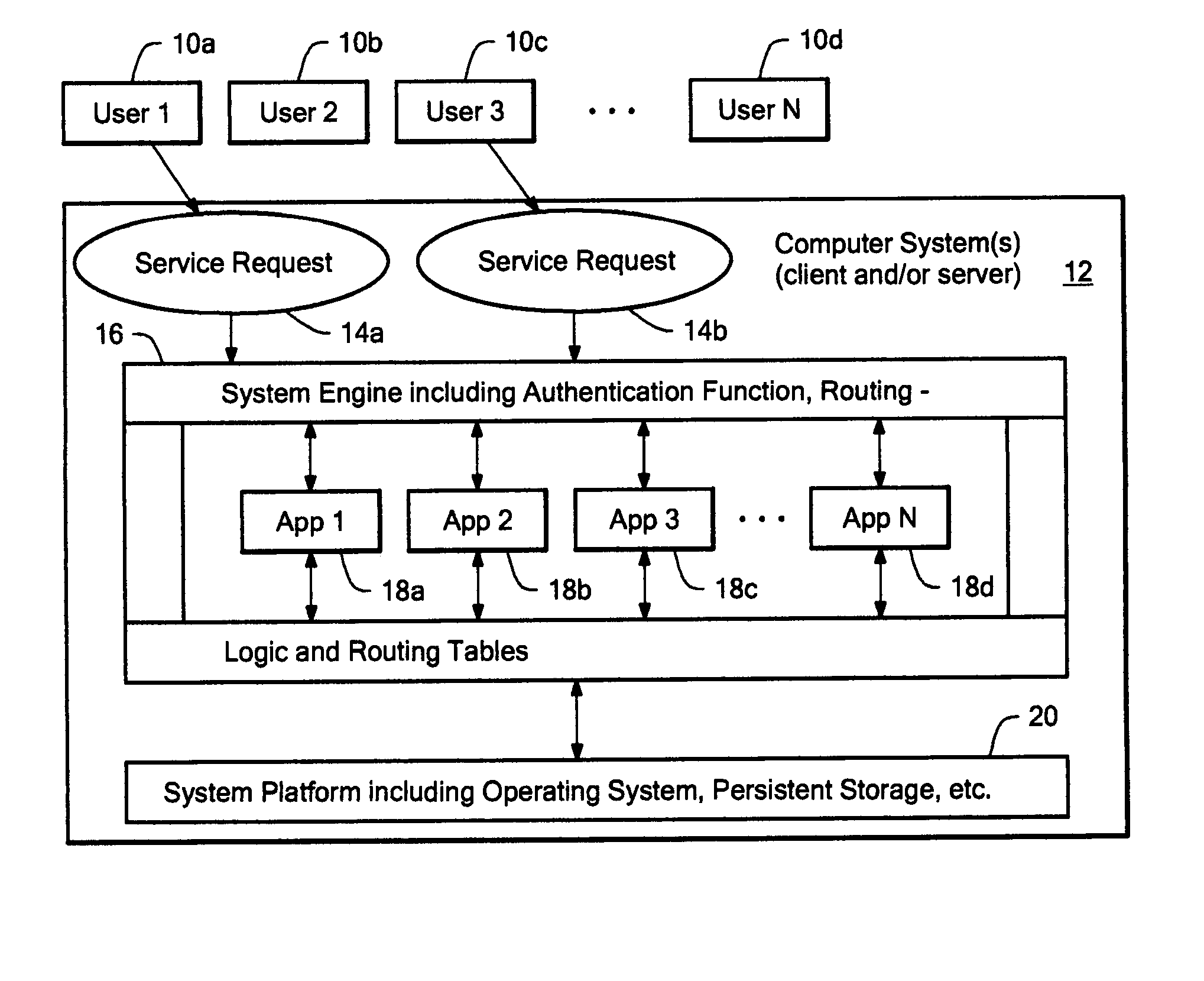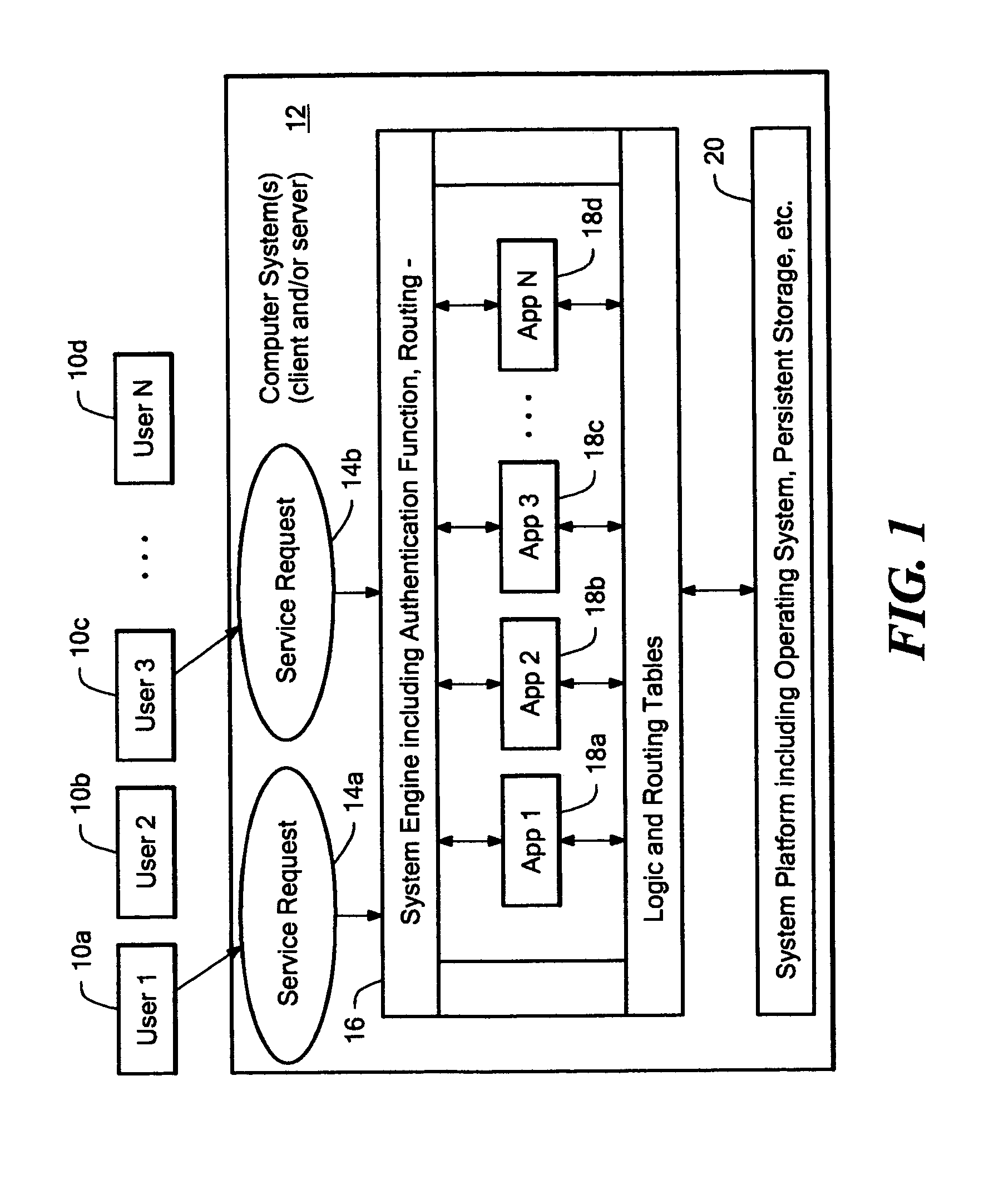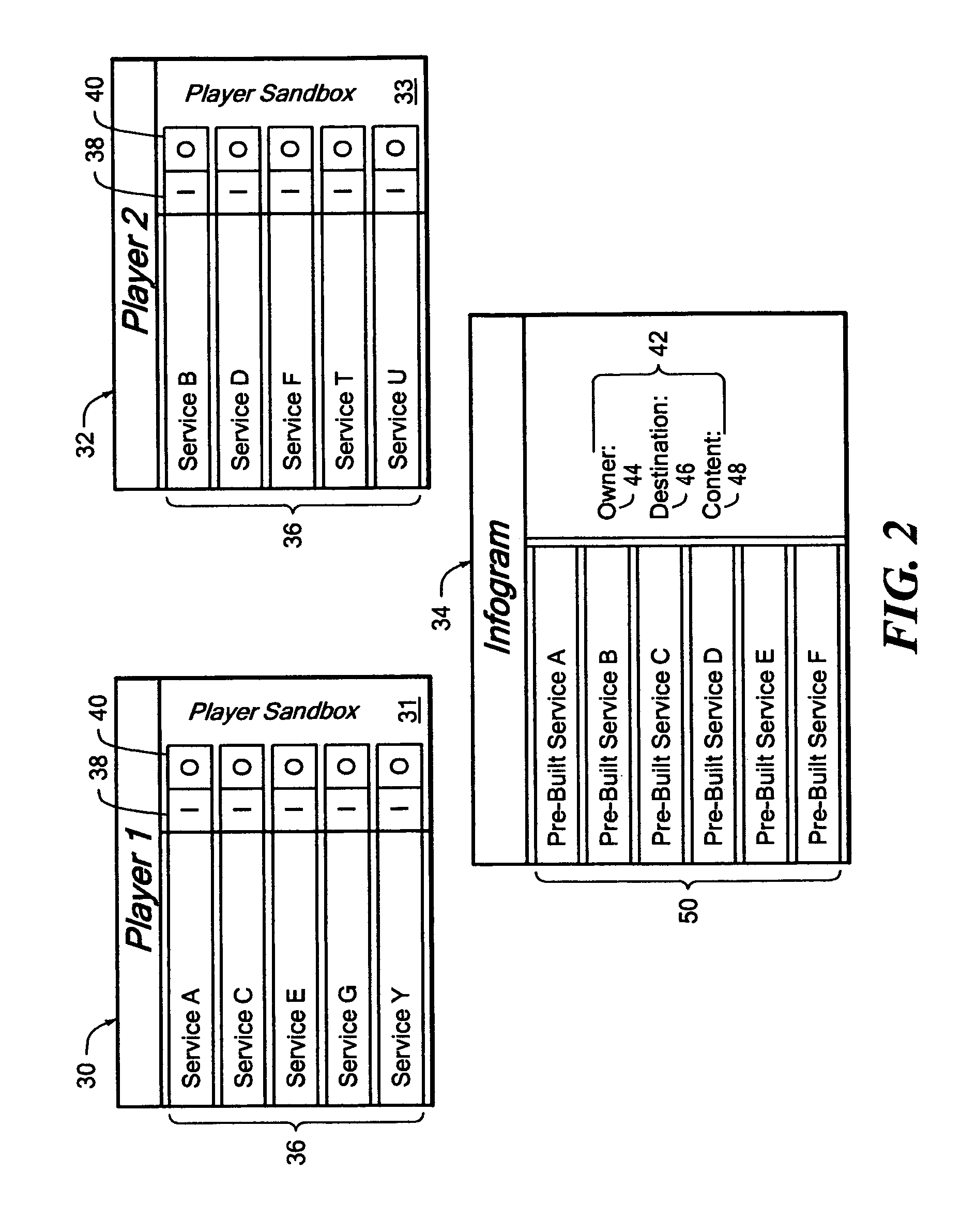User-driven, service oriented software application model
a software application and service-oriented technology, applied in the field of computer software architectures, can solve the problems of difficult to optimize the production capacity of software application development, the variance in scope, functionality, depth, and breath between even relatively similar application programs is much higher, and the difficulty of software application development is often extremely complex
- Summary
- Abstract
- Description
- Claims
- Application Information
AI Technical Summary
Benefits of technology
Problems solved by technology
Method used
Image
Examples
Embodiment Construction
[0028]As shown in FIG. 1, in illustrative embodiment of the disclosed system operates in an execution environment including a number of users, shown as User 110a, User 210b, User 310c through User N 10d, interfaced to one or more computer systems 12, which may include client computer and / or server computer systems. The users shown in FIG. 1 issue service requests, shown as service request 14a and service request 14b, that are received by the system engine 16.
[0029]The system engine 16 may consist of one or more software programs, and is communicably coupled to a number of software applications conformant with the disclosed application model, shown for purposes of illustration as App 118a, App 218b, App 318c through App N 18d. The system engine 16 includes an authentication function, routing logic, routing tables, and other functionalities. The system engine 16 is further communicably coupled to the system platform 20, which includes an operating system for controlling and interfacin...
PUM
 Login to View More
Login to View More Abstract
Description
Claims
Application Information
 Login to View More
Login to View More - R&D
- Intellectual Property
- Life Sciences
- Materials
- Tech Scout
- Unparalleled Data Quality
- Higher Quality Content
- 60% Fewer Hallucinations
Browse by: Latest US Patents, China's latest patents, Technical Efficacy Thesaurus, Application Domain, Technology Topic, Popular Technical Reports.
© 2025 PatSnap. All rights reserved.Legal|Privacy policy|Modern Slavery Act Transparency Statement|Sitemap|About US| Contact US: help@patsnap.com



